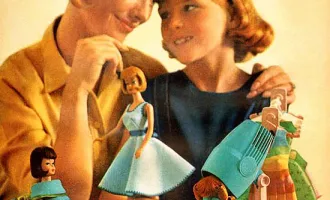
Restrooms For All
It’s common to see seuxally diverse populations in liberal cities like San Francisco. However, how well does academia represent these different groups?
Students at UCSF have recently begun to speak out about the ways in which they feel underrepresented in their programs. Specifically, UCSF could improve its recognition of transgender and gender non-binary individuals.
As a cisgender female, I have never struggled to find a restroom that accommodates me, nor have I faced discrimination in sports teams or housing at UCSF.
But there is an evident disconnect between the understanding of biological sex and gender identity at UCSF. If UCSF is one of the leading institutions of health care around the world, then its policies and recognition must change to reflect the needs of its sexually diverse student population.
Having moved from New York City, I expected the level of gender inclusivity at UCSF to be similar to what I experienced in New York. NYU and UCSF were both founded within about 30 years of one another in the 1800s, and yet it seems as though UCSF is still significantly behind when it comes to encompassing the needs of gender non-conforming and transgender students. I was surprised to find that gender non-binary students feel that UCSF does not recognize their gender.
“If you want my honest opinion, the segregation of bathrooms by sex has very little in the way of reasoning, but it is so ingrained that it will likely remain,” said Michaela Taylor, a pharmacy student from the class of 2018.
Specifically, when looking for restrooms that include all types of gender, gender non-binary students are forced to choose between a “men’s” and a “women’s.” As of now, only one restroom in the School of Nursing has been converted to a gender-inclusive restroom. According to Denisse Porter, the president of the Associated Students of the School of Nursing (ASSN), it took six months just to get a simple sign indicating gender-inclusivity on the door of one restroom stall.
“It is concerning to me that we are starting a new school year with many new students and I don’t believe that any of them know where this restroom is,” Porter said.
And when the university put other gender-inclusive restrooms in place, the School of Nursing was not included in this plan.
Facilities has plans for more gender-inclusive restrooms when the School of Nursing is remodeled, but there is no current update on this process. UCSF provides a link listing gender-inclusive restrooms on campus.
However, it is not apparent that gender-inclusive stalls even exist when entering buildings on campus. If UCSF strives to be at the forefront of advocating healthcare for all individuals, including transgender and gender non-binary students, the lack of signage for gender-inclusive restrooms runs contrary to that goal.
The non-binary restrooms that are currently available to students are multiple-stall restrooms.
Essentially, men’s and women’s restrooms contain single-use stalls for non-binary and transgender individuals who do not feel comfortable using a gender-binary restroom.
This makes sense only in the context of the financial hassle of constructing an entirely new restroom. These single-use stalls are incredibly scarce and not all of them are accessible to disabled individuals.
“The fact of the matter is bathrooms are simply a place where normal biological functions are meant to take place, and they can be done in privacy without the need for exposing genitals,” Taylor said. “I think the predominance of urinals has created that gap, and indeed we should be mindful that certain genitals might be triggering for a sexual abuse survivor…if urinals were still necessary, there could at least be stronger privacy measures so as to help circumvent any violence against women.”
It was not until recently that UCSF Housing Services began designating gender-inclusive living situations for UCSF students and trainees.
While only a few apartments have been turned into gender-inclusive units, all apartment units at NYU dorms are considered gender neutral unless otherwise requested.
While students have been pushing for greater representation of other genders, I also feel it is important for all restrooms, regardless of signage, to accommodate individuals with different biological needs.
UCSF should make menstrual products, such as tampons and pads, available in every bathroom, including men’s, to avoid the insinuation that women are the only genders that can menstruate.
At NYU, where I obtained my bachelor’s degree, all campus buildings contain no-cost menstrual products in their bathrooms.
Their website states that “menstruation should not be stigmatized and providing [menstrual hygiene products] at no cost to students is a step towards normalizing campus-wide conversations about menstrual health.
Not all women can menstruate and not all people who menstruate are women. These products are for a biological function, not gender.” I was disappointed that a similar openness to sexual diversity and gender identity is currently not present at UCSF.
The struggle for gender equality does not limit itself to gender-inclusive restrooms, it can be found in interprofessional sports teams as well.
For example, Sina Nazeri, the co-president of the Gender and Sexual Diversity in Dentistry Alliance (GSDDA), experienced discrimination within interprofessional volleyball teams. In 2017, volleyball teams had a rule that stated if the ball was contacted by two players within the same team, one of the contacts had to identify as female.
What this rule failed to acknowledge were the gender non-binary students who had enrolled to play volleyball. Nazeri brought this issue to the recreation center and the rule was later corrected to state that only one contact could be made, regardless of gender or sexual identity. It is upsetting that the recreation center did not realize the impact of this rule on gender non-conforming students in the first place.
Biological sex is determined genetically, whereas gender is a social construct. There are only two types of biological sexes, but gender exists on a spectrum.



